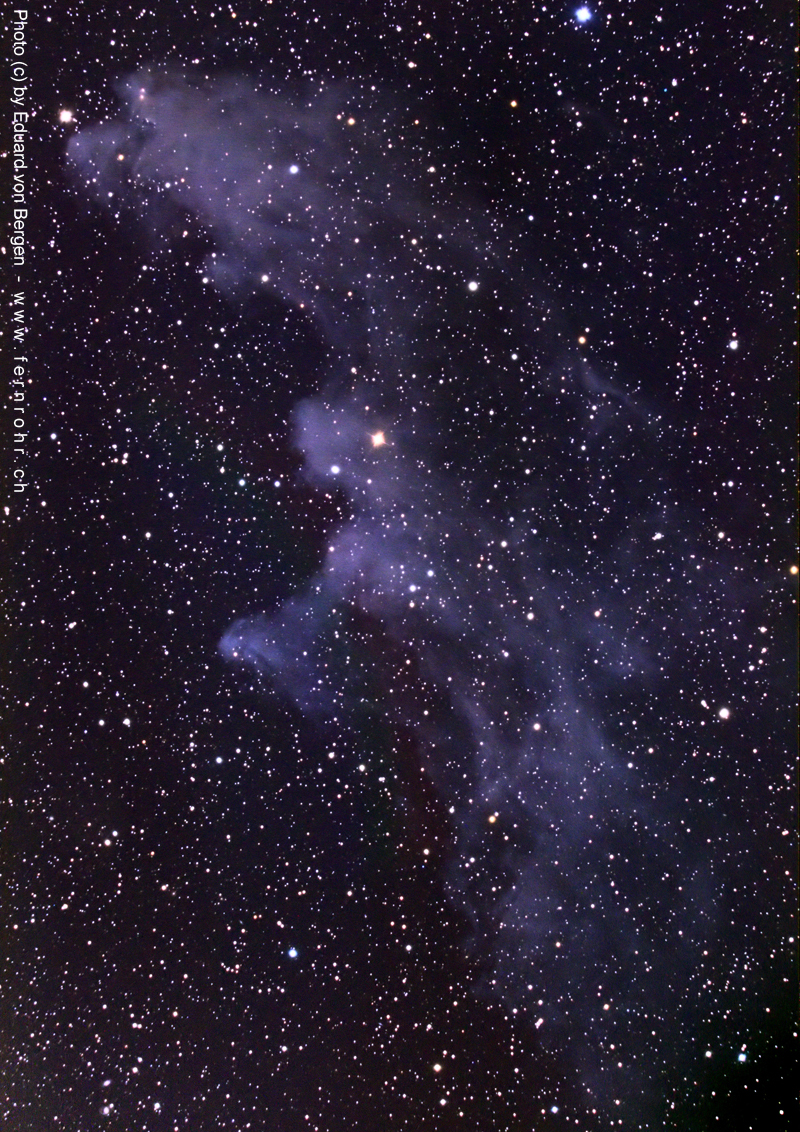Witch Head Nebula (IC 2118)


History
The Witch Head Nebula was discovered on 20 December 1786 by William Herschel with his 18.7 inch reflector telescope with a focal length of 20 feet and recorded as V 38. He noted: «strongly suspected very large nebula, not less than 2° 11' in pole distance (declination) and 26 seconds in right ascension.» [464] In Dreyer's «New General Catalogue» [313] published in 1888, this entry was given the designation NGC 1909. Unfortunately, in Herschel's second part of his catalog, published in 1789 [464], an error had crept in: he always determined the position of the nebulae he discovered relatively to known stars and this time used the star Rigel (β Orionis). However, the nebula was indicated for around 11 minutes in right ascension east instead of west (f for following, instead of p for preceeding). At the position it noted there was nothing to be found that The nebula was then rediscovered by Max Wolf on 16 January 1891, and in Dreyer's «Index Catalogue» [314] it was given the designation IC 2118, which commonly used today. [196]
Physical Properties
IC 2118 is a dust cloud near the bright star Rigel (β Orionis), which reflects and scatters the bluish-white light from the star. Both are about 800 light years away. Presumably it is the remnant of a supernova or parts of a gas bubble, which is blown away by the hot stars in Orion's belt and in the Orion Nebula, which also includes the Barnard Loop east of the constellation Orion. [196, 253]
Observations with radio telescopes show a considerable occurrence of carbon monoxide emissions, an indication of the presence of molecular clouds and star formation in the nebula. Candidates for a precursor to the main sequence stars and some classic T-Tauri stars were found in the nebula. [254]
| Name | RA | Dec | Type | Dim | MD | Dreyer Description | Identification, Remarks |
|---|---|---|---|---|---|---|---|
| NGC 1909 | 05 25 54.0 | -08 01 00 | NF | eL, strongly susp (2° in PD) | WH V 38; GC 1116 | ||
| IC 2118 | 05 04 54.0 | -07 15 00 | RN | 180 × 60 | 0.210 | F, eL, iF, III 500 inv s | LBN 959; CED 41; Witch Head nebula |
Finder Chart
The Witches Head Nebula is located at the source of the Eridanus River, just under 2.5° west of the star Rigel (β Orionis). It is a large, faint reflection nebula.
Visual Observation
635 mm Aperture: At the lowest possible magnification, the brightest parts of the nebula are visible as a pale glow. — 25" f/4 Obession Dobsonian, Astrofarm Tivoli, Namibia, 15. 9. 2023, Bernd Nies
